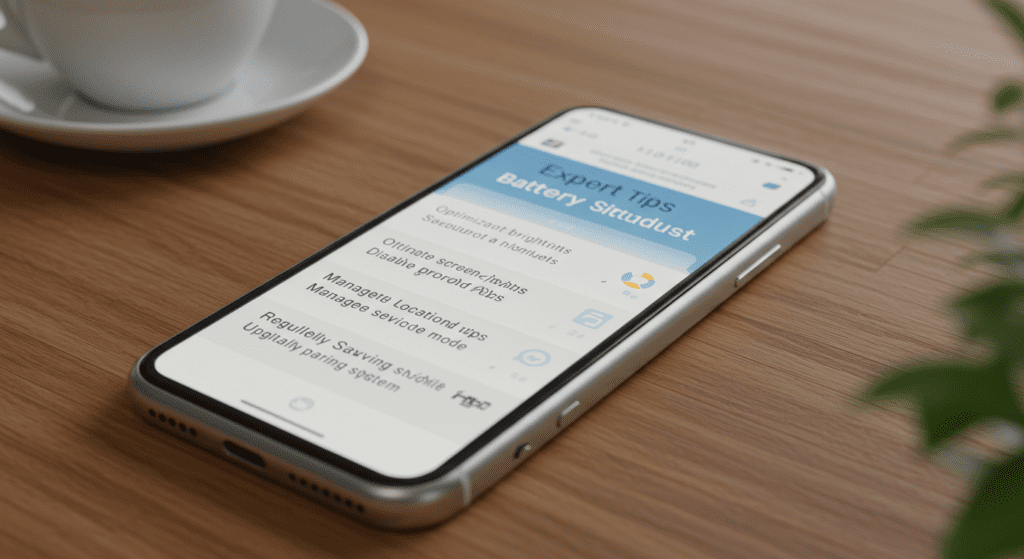Table of Contents
- Introduction
- Understanding Smartphone Battery Technology
- Signs of Battery Degradation
- Optimal Charging Practices
- Temperature Management
- Battery Saving Tips
- When to Replace Your Battery
- Common Battery Myths Debunked
- iPhone vs. Android Battery Care
- Conclusion
- Frequently Asked Questions
Introduction
In today’s connected world, smartphone battery life has become crucial to our daily routines. Whether you’re an iPhone enthusiast or an Android user, understanding how to maintain and extend your device’s battery life can save you from frustration and unexpected shutdowns. This comprehensive guide will walk you through everything you need to know about smartphone battery health, from basic maintenance to advanced troubleshooting techniques.

Understanding Smartphone Battery Technology
How Lithium-ion Batteries Work
Modern smartphones use lithium-ion batteries, which work through a complex chemical process. These batteries have specific characteristics that affect their lifespan and performance. Understanding these basics helps you make informed decisions about battery care.
Battery Cycles Explained
Each complete charge and discharge of your battery counts as one cycle. Most smartphone batteries are designed to retain up to 80% of their original capacity after 500 cycles. Managing these cycles effectively is key to prolonging battery life.
Signs of Battery Degradation
Early Warning Signs
- Sudden shutdowns despite battery percentage showing
- Faster than usual battery drain
- Phone getting unusually warm during charging
- Bulging or swelling of the phone case
Using Built-in Battery Health Tools
Both iOS and Android provide built-in tools to check battery health. Learn how to access and interpret these readings to monitor your battery’s condition.
Optimal Charging Practices
The 20-80 Rule
Keeping your battery level between 20% and 80% can significantly extend its lifespan. This practice prevents stress on the battery from complete discharges and overcharging.
Fast Charging Considerations
While convenient, fast charging generates more heat and can accelerate battery aging. Learn when to use it and when to opt for standard charging instead.
Temperature Management
Ideal Operating Temperatures
Smartphones perform best between 16-22°C (60-72°F). Extreme temperatures can permanently damage your battery capacity.
Avoiding Heat Exposure
- Keep your phone out of direct sunlight
- Remove protective cases while charging
- Avoid leaving your phone in cars during hot days
- Prevent charging while using processor-intensive apps
Battery Saving Tips
Software Optimization
- Managing background apps
- Optimizing display settings
- Controlling location services
- Updating to the latest OS version
Hardware Considerations
- Screen brightness adjustment
- Bluetooth and Wi-Fi management
- Camera usage optimization
- GPS usage strategies
When to Replace Your Battery
Key Indicators
- Battery health below 80%
- Device age over two years
- Significant performance issues
- Visible battery swelling
Professional vs. DIY Replacement
Compare the pros and cons of professional battery replacement services against DIY solutions, including warranty considerations.
Common Battery Myths Debunked
Myth 1: Always Fully Discharge
Modern lithium-ion batteries don’t need complete discharge cycles. In fact, this practice can be harmful.
Myth 2: Overnight Charging Damages Battery
While modern phones have protective circuits, learn about the real impacts of extended charging sessions.
Myth 3: Third-party Chargers Always Harm Batteries
Understand the difference between certified and uncertified chargers, and their effects on battery health.
iPhone vs. Android Battery Care
iOS-Specific Features
Explore unique battery management features in iOS, including optimized battery charging and battery health reporting.
Android Battery Tools
Learn about Android’s adaptive battery features and manufacturer-specific battery care tools.
Conclusion
Maintaining smartphone battery health doesn’t require technical expertise – just consistent good habits and awareness. By following the guidelines in this article, you can significantly extend your device’s battery life and improve its daily performance. Remember that different devices may have specific requirements, so always consult your manufacturer’s guidelines for device-specific instructions.
Frequently Asked Questions
Q: How often should I charge my smartphone? A: Ideally, charge your phone when it drops to 20-30% and unplug it before it reaches 100%. Avoid multiple small charging sessions throughout the day.
Q: Does using phone while charging damage the battery? A: Using your phone while charging can generate excess heat, which may impact battery health over time. It’s best to let your device charge undisturbed.
Q: Can I use any charger for my smartphone? A: It’s recommended to use manufacturer-certified chargers that match your device’s specifications. Using uncertified chargers can potentially damage your battery.
Q: How long should a smartphone battery last? A: With proper care, a smartphone battery should maintain good performance for 2-3 years, though this varies based on usage patterns and environmental factors.
Q: Is it bad to leave my phone plugged in overnight? A: Modern smartphones have protective circuits to prevent overcharging, but it’s still better to avoid prolonged charging sessions to minimize heat exposure and stress on the battery.